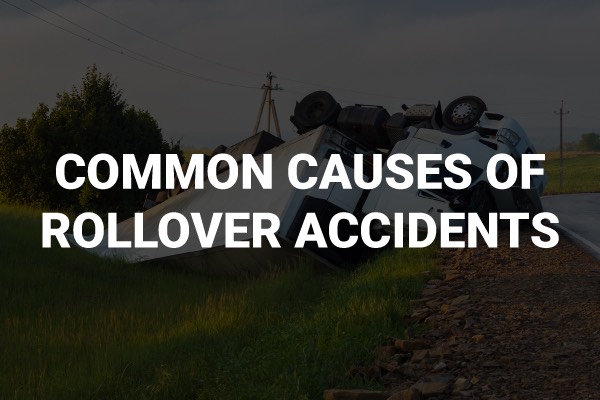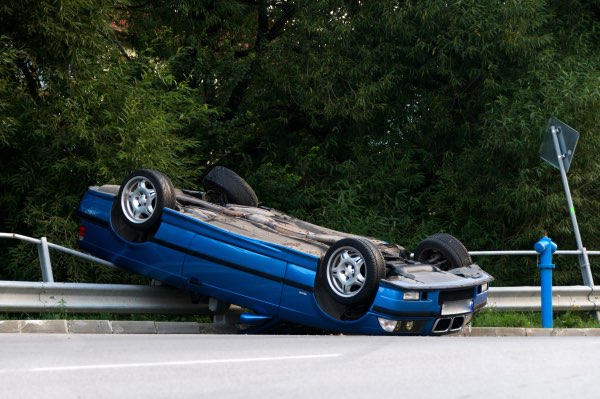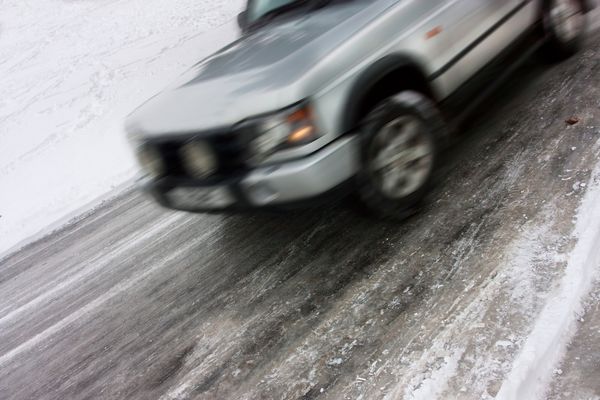
Car accidents are a common occurrence on Texas roads. According to the latest car accident report published by the Texas Department of Transportation, in 2020, the city of Dallas experienced 31,976 car accidents, Fort Worth experienced 12,796 accidents, and Arlington experienced 5,909 accidents.
While the most common of these accidents are rear-end collisions, side-swipes, and head-on collisions, rollover accidents remain one of the most jarring and complicated types of car accidents. The Insurance Institute for Highway Safety reports that 1% of all car accidents result in a rollover, and despite not being the most common type of car accident, rollover accidents account for nearly one-third of all car accident deaths across the United States.
The Hernandez Law Group, P.C. is dedicated to serving the DFW metroplex to the best of our abilities, which is why we continue to research what causes car accidents and what actions can be taken to avoid them. Our team has taken a look into the causes of rollover accidents and created this guide to help you stay safe on the road.
What Is a Rollover Accident?
Rollover accidents happen when a vehicle tips over to one side or rolls completely until it is resting on the hood of the car, leaving the tires in the air. In rare cases, a car may roll over several times before coming to a complete stop. While these accidents are rare in the United States, they remain one of the most deadly, claiming more than 7,000 lives a year in the U.S.
The Two Types of Rollover Accidents
Rollover accidents can be split into two different categories. These are as follows:
Tripped rollovers: tripped rollovers are when a vehicle leaves the roadway and comes into contact with an obstacle that causes it to roll over. This obstacle can be anything from soft soil to the curb or guardrail. Tripped rollover accidents account for 95% of all single-car rollovers accidents.
Untripped rollover accidents: untripped rollover accidents occur with a high-speed collision avoidance maneuver, such as swerving to avoid rear-ending a vehicle, and are most common in vehicles that are top-heavy, such as SUVs and trucks. These accidents account for 5% of all rollover accidents.
What Are the Most Common Causes of Rollover Accidents?
Rollover accidents can happen to any type of vehicle when the following circumstances occur:
1. Driver Loses Control of the Car

The most common cause of rollover car accidents is loss of control from the driver. Whether the driver falls asleep at the wheel, becomes distracted, or hits unfavorable road conditions such as ice, the loss of control to follow would cause the driver to come into contact with an obstruction. This obstruction can be something simple such as soft soil where the wheel becomes stuck or something bigger such as a guardrail. The forward momentum of the car can cause the car to roll over onto its side or top.
2. Driver Acts Recklessly
All drivers have a responsibility while on the road to drive responsibly. This is to keep themselves, their passengers, and other drivers on the road safe. When a driver is acting recklessly, speeding, or quickly shifting in and out of traffic, the risk of a rollover accident increases. Taking a corner or turning too sharply while speeding can cause the car to lose its grip on the surface of the road, leading the car to tip to one side. This is especially true for vehicles that are top-heavy, such as vans, trucks, and vehicles carrying a heavy load.
3. Car Involved in a Multi-Vehicle Crash
While rollover accidents are generally single-vehicle accidents, they can also occur in a multi-vehicle crash. If the vehicle is hit hard on the side, the force of the oncoming vehicle may flip the car over. In some cases, the collision could cause the vehicle’s momentum to carry it into another obstacle, such as a curb or guardrail, ending in a rollover.
What Injuries are Associated With a Rollover Accident?
Rollover accidents are one of the most violent types of accidents, often resulting in serious or life-threatening injuries and even death. The severity of the injuries often depends heavily on whether the vehicle’s occupants were wearing their seatbelts or not. Drivers and passengers who fail to wear a seatbelt and are involved in a rollover accident have a higher risk of being ejected from the vehicle.
Here are some of the most common injuries that result from a rollover accident:
- Traumatic Brain Injuries: Rollover accidents are violent and often toss around the occupants of the vehicle. Even individuals who are wearing their seatbelts can have their heads struck by loose objects or slammed against the windows or seats.
- Spinal Cord Injuries: The sudden jerking motion that results from a rollover accident can cause damage to the spinal column, potentially resulting in full or partial paralysis.
- Broken Bones: Broken bones can come from being ejected from the vehicle, the body striking against different objects in the vehicle as it is rolling, or even from limbs getting crushed underneath the vehicle.
- Internal Damage: Internal organs can become damaged due to the force of the collision or from items striking the individual after they have been ejected from the vehicle. This is a serious injury that needs medical attention immediately to avoid an individual from bleeding out.
How Can I Avoid a Rollover Accident?

Rollover accidents can be avoided by taking proper care while on the road and ensuring that your vehicle is in good condition before driving. Here are some actions you can take to keep you and your family safer on the road:
- Never Operate a Vehicle Without Wearing Your Seatbelt: While this tip doesn’t necessarily prevent you from getting into a rollover accident, it can be the difference between life and death if you do wind up in one. A seat belt can reduce your risk of death by up to 45%.
- Check the Pressure of Your Tires Before Driving: Under-inflated tires create more friction, making them run hotter than inflated tires. This increases the risk of suffering a blowout which can cause you to lose control of your car. In the same way, over-inflated tires are more susceptible to damage from potholes, resulting in the loss of control. Always keep your car’s tires at the recommended pressure when driving and make sure to check them regularly.
- Follow the Speed Limit: Speeding is dangerous in any situation and should be avoided. Even if you are running late, resist the urge to speed. Speeding reduces your reaction time, makes it harder to maintain control of your vehicle, and can create a dangerous situation when taking sharp turns.
- Never Drive Under the Influence of Drugs or Alcohol: Drugs and alcohol mess with your judgment and impair your ability to make safe decisions. Never operate a vehicle if you have been drinking or have taken drugs, and instead, contact an Uber, a friend, or a taxi to take you to your next destination.
- Slow Down on Curves or Sharp Turns: Whether it is an exit ramp or a windy road, slowing down when driving over these areas can decrease the chance of you ending up in a rollover accident.
- Be Aware of Road Conditions and Drive Accordingly: Slick road conditions from ice or rain can make driving extremely dangerous. If you are driving in these conditions, always exhibit extreme caution by reducing your speed, increasing the distance between you and other drivers, and do not drive if you cannot see. Wet or slick roads reduce your car’s traction and can significantly increase stopping distance.
Were You Involved in a Rollover Accident?
Rollover accidents can be caused by a wide variety of reasons. Whether it is because of a faulty tire or your car gets hit in a multi-vehicle accident, you should never be held responsible for an accident that is caused by someone else’s negligence. The dedicated team at the Hernandez Law Group, P.C. can help you claim the compensation you deserve for medical expenses and damages resulting from your accident. Contact our team today for more information on our services or to schedule a free, no-obligation consultation to go over your case.
